Acer Aspire Vero (AV14-51) review
 Every once in a while we should stop and think about the environment. Most of the time when you come across a piece of junk on the ground, you pick it up and throw it in the nearest trash can. However, throwing it in the trash is not always the best solution. This is where recycling comes in. You will be surprised by the number of products that can be reused. And Acer decided to take full advantage of that.
Every once in a while we should stop and think about the environment. Most of the time when you come across a piece of junk on the ground, you pick it up and throw it in the nearest trash can. However, throwing it in the trash is not always the best solution. This is where recycling comes in. You will be surprised by the number of products that can be reused. And Acer decided to take full advantage of that.
It is no longer that expensive to make one product out of materials from another. This is why it now makes sense to build an entire laptop using post-consumer-recycled plastics. Interestingly, it is used for both the body and the keycaps. Not only that but the touchpad is now made from ocean-retrieved plastic. This means that despite the name of the material (Ocean Glass) the unit does not contain glass.
Furthermore, Acer didn’t apply any paint to the surface of the device. What is interesting is that the company decided to use upgradability to promote a lower carbon footprint. And they are absolutely right to do so.
Anyways, the Aspire Vero (AV14-51) is a laptop in the first place and only then an Avenger of the Earth. This means that you need to be conscious of its technological capabilities too. Well, you will be glad to hear that it uses Alder Lake-U processors, which are plenty fast, and pretty efficient. You can also expect to see only 1080p IPS panels, which is actually good news.
So, let’s not waste any more time, and see what Acer created for the environmentally-conscious user.
You can check the prices and configurations in our Specs System: https://laptopmedia.com/series/acer-aspire-vero-av14-51/
Contents
Specs Sheet
- HDD/SSD
- up to 2000GB SSD
- M.2 Slot
- 1x 2280 M.2 NVMe slot See photo
- RAM
- up to 64GB
- OS
- Windows 11 Home, Windows 11 Pro, Windows 10 Pro
- Battery
- 56Wh, 3-cell, 56Wh, 4-cell
- Body material
- Plastic / Polycarbonate
- Dimensions
- 328.67 x 223.57 x 17.90 mm (12.94" x 8.80" x 0.70")
- Weight
- 1.50 kg (3.3 lbs)
- Ports and connectivity
- 2x USB Type-A
- 3.2 Gen 1 (5 Gbps)
- 1x USB Type-C
- Thunderbolt 4
- HDMI
- Card reader
- Ethernet LAN
- Wi-Fi
- 802.11ax
- Bluetooth
- 5.2
- Audio jack
- 3.5mm Combo Jack
- Features
- Fingerprint reader
- Web camera
- FHD
- Backlit keyboard
- Microphone
- Dual Microphones with Acer Purified Voice
- Speakers
- 2x Stereo Speakers, Acer TrueHarmony
- Optical drive
All Acer Aspire Vero (AV14-51) configurations
What’s in the box?
Inside the package, you will see some paperwork, as well as a 65W charger.
Design and construction
As we saw with the 15-inch model from last year, the plastic body has a green tint and is covered with thousands of speckles. The laptop weighs 1.5 kg and has a profile of 17.9mm, which makes it pretty thin and light in our opinion.
It sports sharp corners and a pretty boxy design. The surface is rough, but quite surprisingly it is comfortable to rest your wrists on. Unfortunately, the rigidity of the lid is not very good, but the base handles twists pretty well.
Thankfully, the lid opens easily with a single hand. Furthermore, once you open it, the backside of the base lifts from the ground, which provides more airflow to the fan. On the other hand, the old-school look is further enhanced by the thick bottom and top bezels. Yet, the top one houses a Web camera, which is good.
Moving to the base, we see a backlit keyboard, which sports decent key travel and clicky feedback, which makes it a comfortable unit for long typing sessions. You can see that the “R” and “E” buttons are mirrored to reflect the REcycling nature of the machine. Additionally, you can toggle performance modes by pressing the Function and “F” buttons simultaneously.
Below the keyboard, you will find the “OceanGlass” touchpad. As we mentioned it is made out of ocen-retrieved plastic. It offers smooth gliding, and you get a fingerprint embedded into it. Moreover, the fingerprint reader doesn’t interfere with the touch sensitivity of the touchpad.
On the bottom panel, you can obviously find the speaker cutouts, as well as the ventilation grill. The hot air is then exhausted through a gap in between the base and the lid.
Ports
On the left side, there is the charging plug, a Thunderbolt 4 port, an HDMI connector, a USB Type-A 3.2 (Gen. 1) port, and an Audio jack. Switch sides, and you will find a Kensington lock slot, and another USB Type-A 3.2 (Gen. 1) port.
Disassembly, upgrade options and maintenance
The first thing you need to do is to remove the bottom panel. To do so, you need to undo 11 Phillips-head screws. Then, pry the panel with a plastic tool and lift it away from the chassis.
Inside, you will see a 53Wh battery pack. It lasts for about 11 hours of either Web browsing or video playback. To remove it, just unplug the battery connector from the motherboard. There might be some Phillips-head screws too.
Unfortunately, the memory here is soldered to the motherboard. On the other hand, there is one M.2 PCIe x4 slot for storage.
The cooling comprises two heat pipes, a medium-sized heat sink, and a fan. Furthermore, the VRMs have a heat spreader, which manages their thermals.
Display quality
Acer Aspire Vero (AV14-51) sports a Full HD IPS display, model number Innolux N140HCG-EQ1 (CMN1408). Its diagonal is 14″ (35.56 cm), and the resolution – 1920 х 1080. Additionally, the screen ratio is 16:9, the pixel density – 157 ppi, their pitch – 0.161 x 0.161 mm. The screen can be considered Retina when viewed from at least 56 cm (from this distance, the average human eye can’t see the individual pixels).
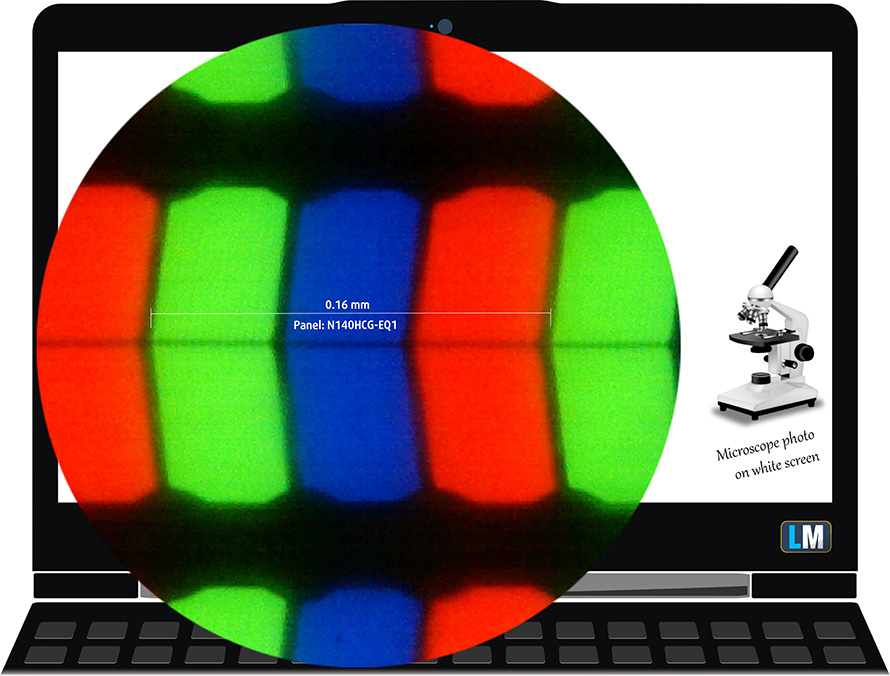
Its viewing angles are excellent. We have provided images at 45 degrees to evaluate quality.

Also, here is a video with a locked focus and exposure.
The maximum measured brightness is 305 nits (cd/m2) in the middle of the screen and 293 nits (cd/m2) average across the surface with a maximum deviation of 10%. The Correlated Color Temperature on a white screen and at maximum brightness is 6700K (average) – slightly warmer than the 6500K optimum for sRGB.
In the illustration below you can see how the display performs from a uniformity perspective. The illustration below shows how matters are for operational brightness levels (approximately 140 nits) – in this particular case at 47% Brightness (White level = 144 cd/m2, Black level = 0.07 cd/m2).
Values of dE2000 over 4.0 should not occur, and this parameter is one of the first you should check if you intend to use the laptop for color-sensitive work (a maximum tolerance of 2.0 ). The contrast ratio is exceptional – 2020:1.
To make sure we are on the same page, we would like to give you a little introduction to the sRGB color gamut and the Adobe RGB. To start, there’s the CIE 1976 Uniform Chromaticity Diagram that represents the visible specter of colors by the human eye, giving you a better perception of the color gamut coverage and the color accuracy.
Inside the black triangle, you will see the standard color gamut (sRGB) that is being used by millions of people on HDTV and on the web. As for the Adobe RGB, this is used in professional cameras, monitors, etc for printing. Colors inside the black triangle are used by everyone and this is an essential part of the color quality and color accuracy of a mainstream notebook.
Still, we’ve included other color spaces like the famous DCI-P3 standard used by movie studios, as well as the digital UHD Rec.2020 standard. Rec.2020, however, is still a thing of the future and it’s difficult for today’s displays to cover that well. We’ve also included the so-called Michael Pointer gamut, or Pointer’s gamut, which represents the colors that naturally occur around us every day.
The yellow dotted line shows Acer Aspire Vero (AV14-51)’s color gamut coverage.
Its display covers 95% of the sRGB/ITU-R BT.709 (web/HDTV standard) in CIE1976.
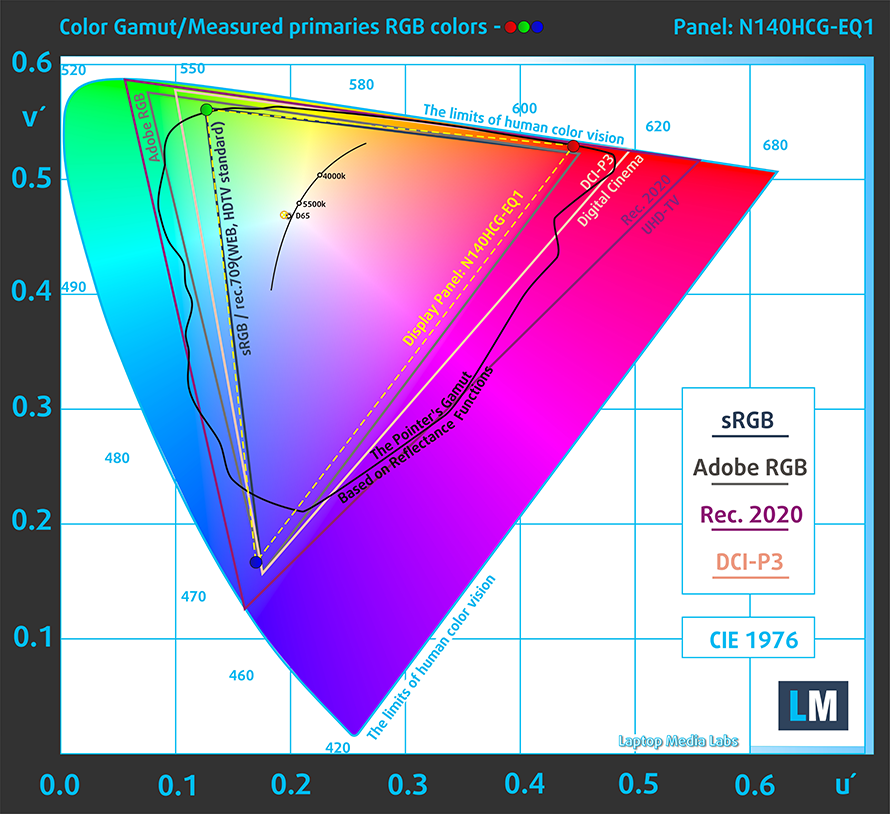
Our “Design and Gaming” profile delivers optimal color temperature (6500K) at 140 cd/m2 luminance and sRGB gamma mode.
According to our tests, the gamma curve is flat across all grey levels, with an average value of 2.23.
We tested the accuracy of the display with 24 commonly used colors like light and dark human skin, blue sky, green grass, orange, etc. You can check out the results at factory condition and also, with the “Design and Gaming” profile.
Below you can compare the scores of Acer Aspire Vero (AV14-51) with the default settings (left), and with the “Gaming and Web design” profile (right).
The next figure shows how well the display can reproduce dark parts of an image, which is essential when watching movies or playing games in low ambient light.
The left side of the image represents the display with stock settings, while the right one is with the “Gaming and Web Design” profile activated. On the horizontal axis, you will find the grayscale, and on the vertical axis – the luminance of the display. On the two graphs below you can easily check for yourself how your display handles the darkest nuances but keep in mind that this also depends on the settings of your current display, the calibration, the viewing angle, and the surrounding light conditions.
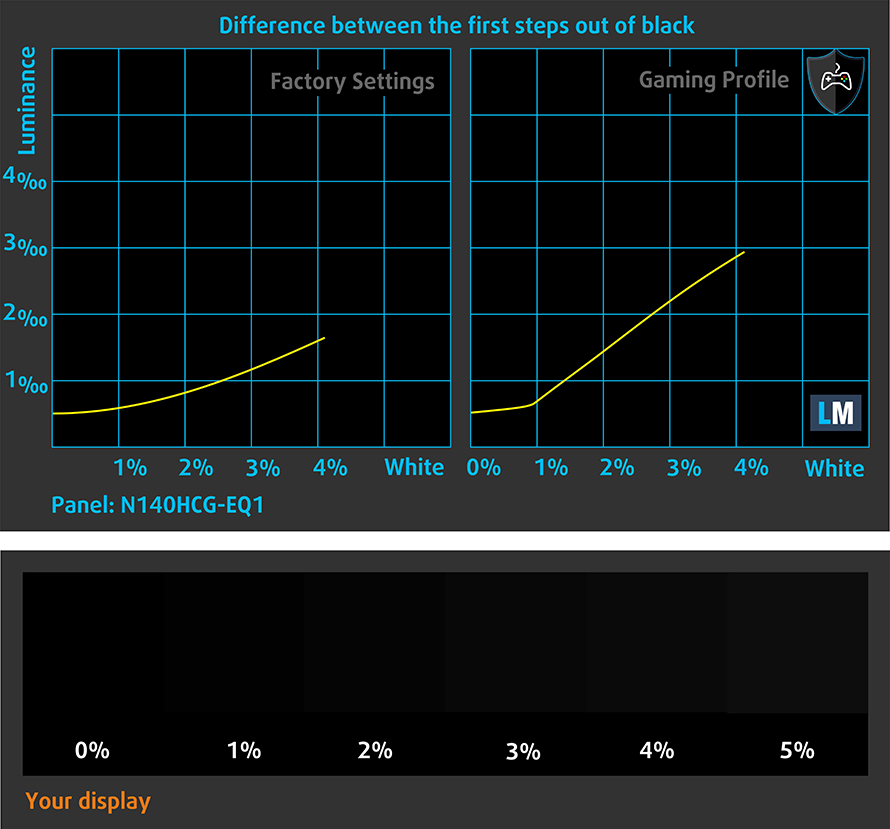
Response time (Gaming capabilities)
We test the reaction time of the pixels with the usual “black-to-white” and “white-to-black” method from 10% to 90% and vice versa.
We recorded Fall Time + Rise Time = 26 ms.
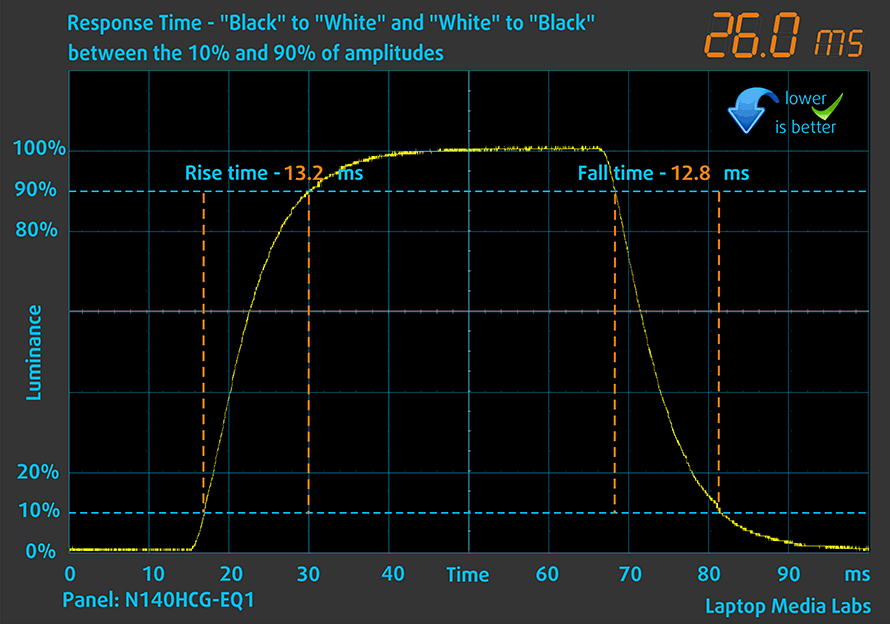
After that, we test the reaction time of the pixels with the usual “Gray-to-Gray” method from 50% White to 80% White and vice versa between 10% and 90% of the amplitude.

Health impact – PWM / Blue Light
PWM (Screen flickering)
Pulse-width modulation (PWM) is an easy way to control monitor brightness. When you lower the brightness, the light intensity of the backlight is not lowered, but instead turned off and on by the electronics with a frequency indistinguishable to the human eye. In these light impulses, the light/no-light time ratio varies, while brightness remains unchanged, which is harmful to your eyes. You can read more about that in our dedicated article on PWM.
Acer Aspire Vero (AV14-51)’s display doesn’t use PWM for brightness adjustment. This makes it comfortable for long working periods.
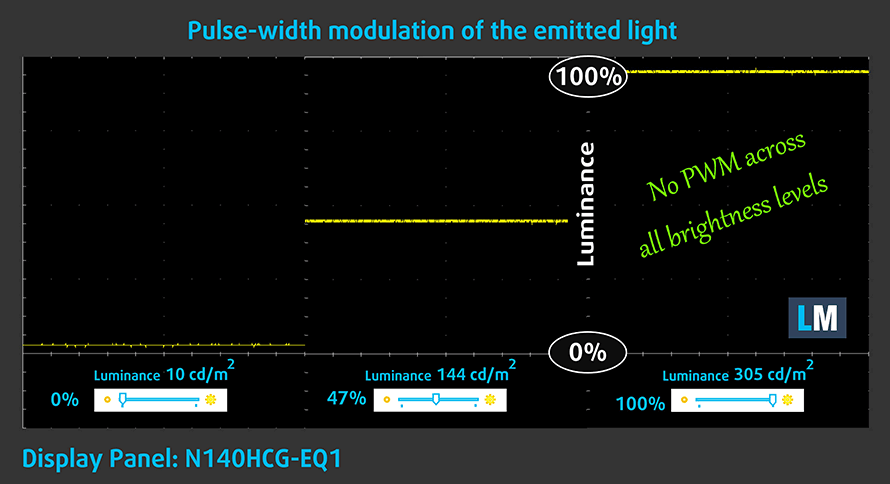
Blue light emissions
Installing our Health-Guard profile not only eliminates PWM but also reduces the harmful Blue Light emissions while keeping the colors of the screen perceptually accurate. If you’re not familiar with the Blue light, the TL;DR version is – emissions that negatively affect your eyes, skin, and your whole body. You can find more information about that in our dedicated article on Blue Light.
Gloss level measurement
Glossy-coated displays are sometimes inconvenient in high ambient light conditions. We show the level of reflection on the screen for the respective laptop when the display is turned off and the measurement angle is 60° (in this case, the result is 51.2 GU).
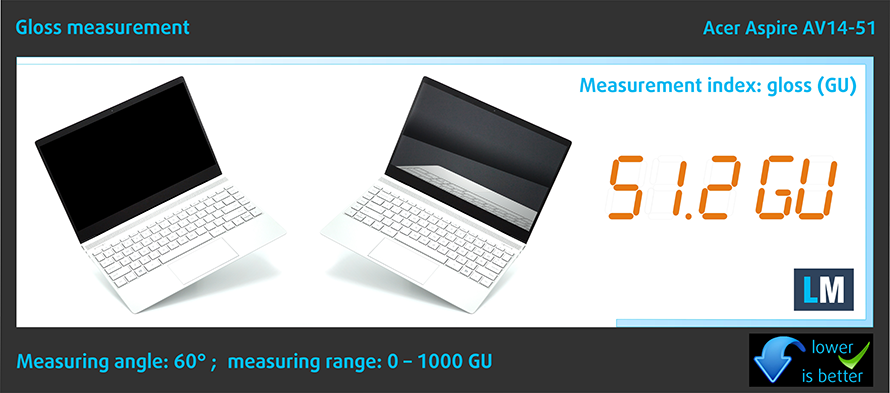
Buy our profiles
Since our profiles are tailored for each display model, this article and its respective profile package are meant for Acer Aspire Vero (AV14-51) configurations with 14.0″ Innolux N140HCG-EQ1 (CMN1408) (FHD, 1920 × 1080) IPS panel.
*Should you have problems with downloading the purchased file, try using a different browser to open the link you’ll receive via e-mail. If the download target is a .php file instead of an archive, change the file extension to .zip or contact us at [email protected].
Read more about the profiles HERE.
In addition to receiving efficient and health-friendly profiles, by buying LaptopMedia's products you also support the development of our labs, where we test devices in order to produce the most objective reviews possible.

Office Work
Office Work should be used mostly by users who spend most of the time looking at pieces of text, tables or just surfing. This profile aims to deliver better distinctness and clarity by keeping a flat gamma curve (2.20), native color temperature and perceptually accurate colors.

Design and Gaming
This profile is aimed at designers who work with colors professionally, and for games and movies as well. Design and Gaming takes display panels to their limits, making them as accurate as possible in the sRGB IEC61966-2-1 standard for Web and HDTV, at white point D65.

Health-Guard
Health-Guard eliminates the harmful Pulse-Width Modulation (PWM) and reduces the negative Blue Light which affects our eyes and body. Since it’s custom tailored for every panel, it manages to keep the colors perceptually accurate. Health-Guard simulates paper so the pressure on the eyes is greatly reduced.
Get all 3 profiles with 33% discount
Sound
Acer Aspire Vero (AV14-51)’s speakers produce a sound of decent quality. Its low, mid, and high tones are clear of deviations.
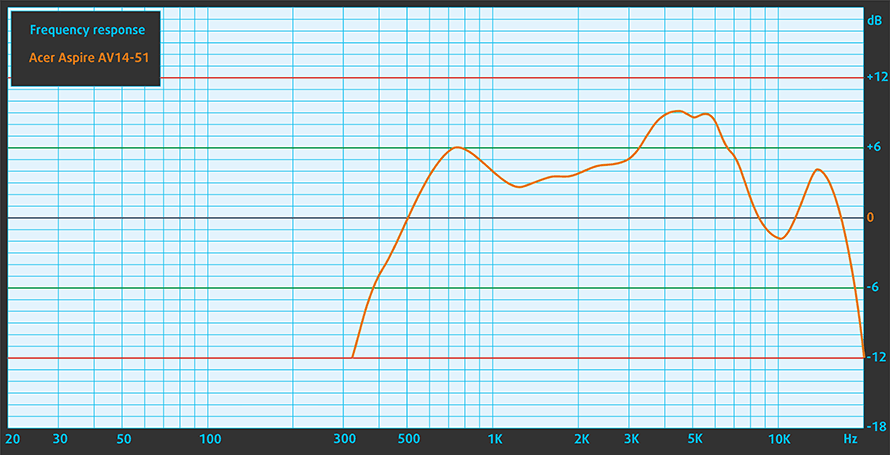
Battery
Now, we conduct the battery tests with Windows Better performance setting turned on, screen brightness adjusted to 120 nits and all other programs turned off except for the one we are testing the notebook with. This notebook’s 53Wh battery pack lasts for 11 hours and 11 minutes of Web browsing, or 10 hours and 56 minutes of video playback on a single charge.
In order to simulate real-life conditions, we used our own script for automatic web browsing through over 70 websites.
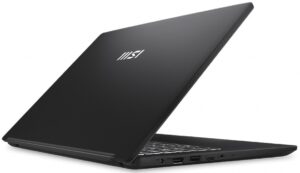
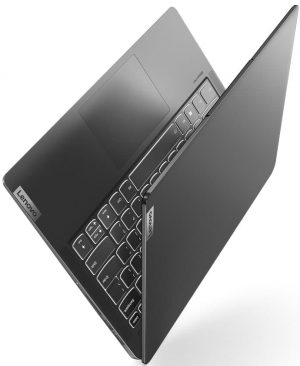
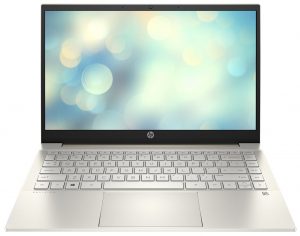
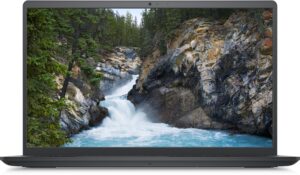
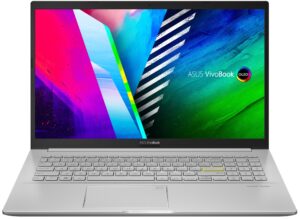
For every test like this, we use the same video in HD.





CPU options
This device should be available with a Core i3-1215U, Core i5-1235U, or Core i7-1255U.
Results are from the Cinebench R23 CPU test (the higher the score, the better)
Results are from our Photoshop benchmark test (the lower the score, the better)
GPU options
The only available graphics option is the integrated GPU inside of your processor.
Results are from the 3DMark: Time Spy (Graphics) benchmark (higher the score, the better)
Results are from the 3DMark: Fire Strike (Graphics) benchmark (higher the score, the better)
Results are from the 3DMark: Wild Life benchmark (higher the score, the better)
Results are from the Unigine Superposition benchmark (higher the score, the better)
Gaming tests

| CS:GO | HD 1080p, Low (Check settings) | HD 1080p, Medium (Check settings) | HD 1080p, MAX (Check settings) |
|---|---|---|---|
| Average FPS | 134 fps | 90 fps | 61 fps |

| DOTA 2 | HD 1080p, Low (Check settings) | HD 1080p, Normal (Check settings) | HD 1080p, High (Check settings) |
|---|---|---|---|
| Average FPS | 141 fps | 95 fps | 56 fps |
Temperatures and comfort
Max CPU load
In this test we use 100% on the CPU cores, monitoring their frequencies and chip temperature. The first column shows a computer’s reaction to a short load (2-10 seconds), the second column simulates a serious task (between 15 and 30 seconds), and the third column is a good indicator of how good the laptop is for long loads such as video rendering.
Average P-core frequency; Average E-core frequency; CPU temp.; Package Power
| Intel Core i5-1235U (15W TDP) | 0:02 – 0:10 sec | 0:15 – 0:30 sec | 10:00 – 15:00 min |
|---|---|---|---|
| Acer Aspire Vero (AV14-51) | 3.63 GHz @ 2.87 GHz @ 84°C @ 55W | 2.73 GHz @ 2.36 GHz @ 81°C @ 33W | 2.49 GHz @ 2.23 GHz @ 79°C @ 28W |
| MSI Modern 14 (C12M) | 3.17 GHz @ 2.69 GHz @ 77°C @ 45W | 3.10 GHz @ 2.61 GHz @ 81°C @ 45W | 2.69 GHz @ 2.45 GHz @ 78°C @ 35W |
| Dell Latitude 15 5530 | 3.57 GHz @ 3.02 GHz @ 94°C @ 52W | 2.03 GHz @ 2.09 GHz @ 76°C @ 21W | 2.24 GHz @ 2.19 GHz @ 64°C @ 23W |
The Aspire Vero (AV14-51) performs pretty well with the Core i5-1235U. Indeed, the MSI Modern 14 (C12M) manages slightly higher results, but we are happy nonetheless.
Comfort during full load
Moreover, the noise levels are not too high, nor are the external temperatures.
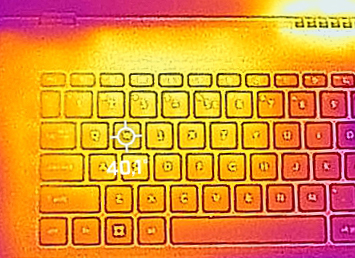
Verdict
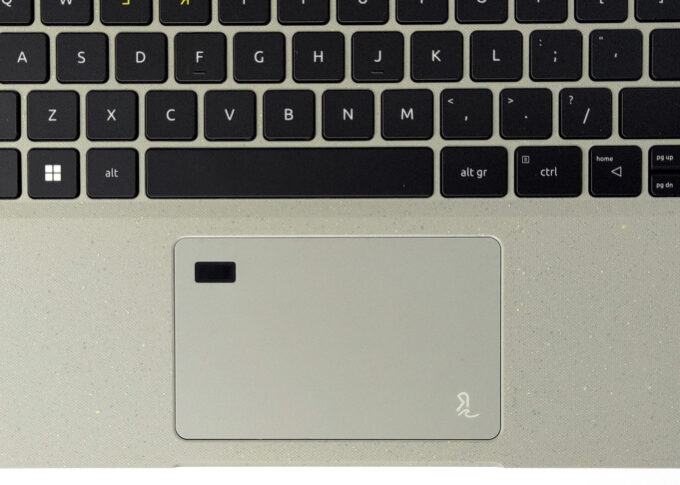 Taking care and becoming one with your surroundings is a high form of intelligence. Being interested, and investing in the Aspire Vero basically means that you want to make a difference. Interestingly, it is not perfect in terms of “laptopness”, but at the same time, it is very good for what it represents.
Taking care and becoming one with your surroundings is a high form of intelligence. Being interested, and investing in the Aspire Vero basically means that you want to make a difference. Interestingly, it is not perfect in terms of “laptopness”, but at the same time, it is very good for what it represents.
In the beginning, we said that upgradeability is something, which helps a laptop be sustainable. By letting the user upgrade the memory or the storage, you basically prolong the life cycle of the device. Unfortunately, the RAM of this machine is soldered to the motherboard. On the bright side, it does use quad-channel LPDDR4 memory, which has a good impact on the graphics department.
Speaking of performance, we are pretty happy with what we saw. Both in terms of computing and graphics. In fact, the 12th Gen Core i5-1235U completely obliterates every ULV CPU Intel had up its sleeve last year. We were especially impressed by the Photoshop times.
Acer Aspire Vero (AV14-51)’s IPS panel has a Full HD resolution, comfortable viewing angles, and an excellent contrast ratio. It doesn’t use PWM for brightness adjustment and covers 95% of the sRGB color gamut. Moreover, our Gaming and Web design profile helps it reach a standard-matching color accuracy, which makes the laptop usable for color-sensitive content.
Another thing is the battery life. We got about 11 hours of either Web browsing or video playback on a single charge, which makes us pretty confident that you won’t need a charger during the day. Of course, this depends on your workflow, but if you are generally working with Web content, and nonintensive software, you should be good.
In addition, you get an okay I/O selection, which includes a Thunderbolt 4 connector, an HDMI port, and two USB Type-As 3.2 (Gen. 1). You don’t get an SD card reader, nor a LAN port, which is unfortunate, but not too bad either.
Generally, the experience of using this laptop is pretty good, its input devices are comfortable, and we are very impressed by the touchpad, which is as smooth as glass, but actually uses plastic, recovered from the ocean.
Undoubtedly, Acer has done a great job in helping the environment and making an effort to become carbon neutral. We will be heavenly happy if all manufacturers go this way with most if not all of their notebooks. Until then – reuse, reduce, and recycle.
You can check the prices and configurations in our Specs System: https://laptopmedia.com/series/acer-aspire-vero-av14-51/
Pros
- Environment-friendly
- Good performance
- Comfortable keyboard and touchpad
- Body and touchpad are made out of recycled plastic
- Decent cooling
- Thunderbolt 4 + fingerprint reader
- Good battery life
- 95% sRGB coverage and accurate colors with our Gaming and Web design profile (Innolux N140HCG-EQ1 (CMN1408))/li>
- No PWM (Innolux N140HCG-EQ1 (CMN1408))/li>
Cons
- No SD card reader
- Soldered memory
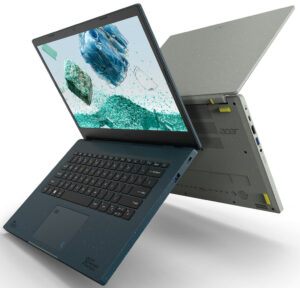
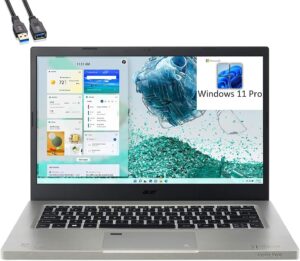


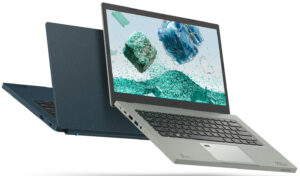
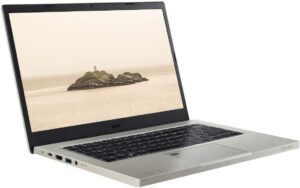
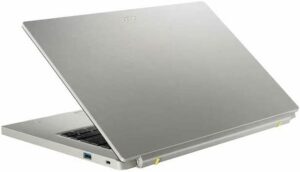

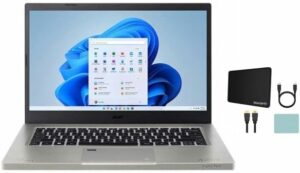
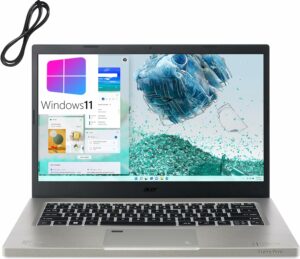
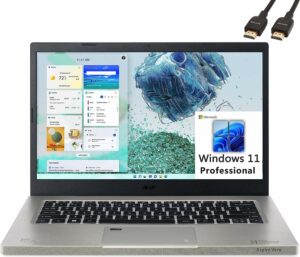

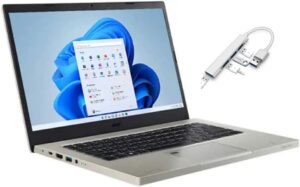
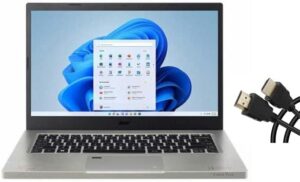

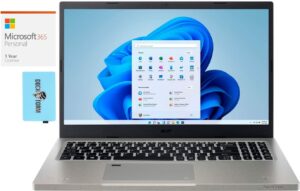
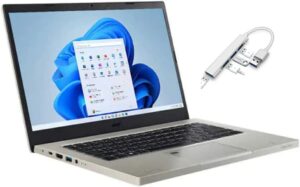


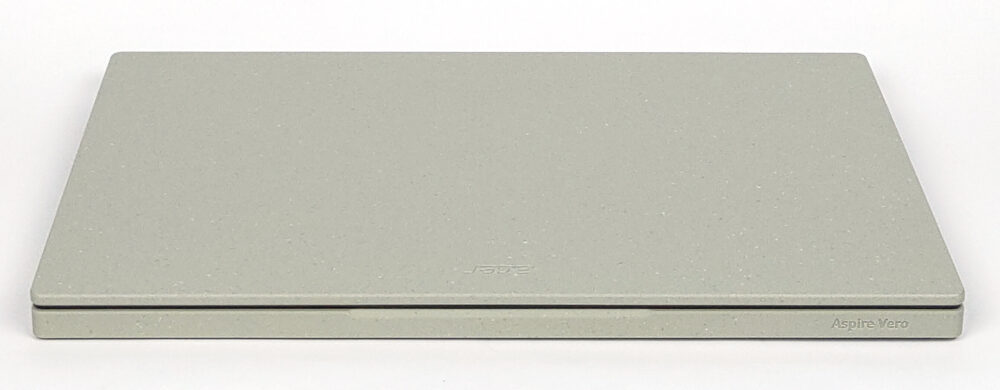
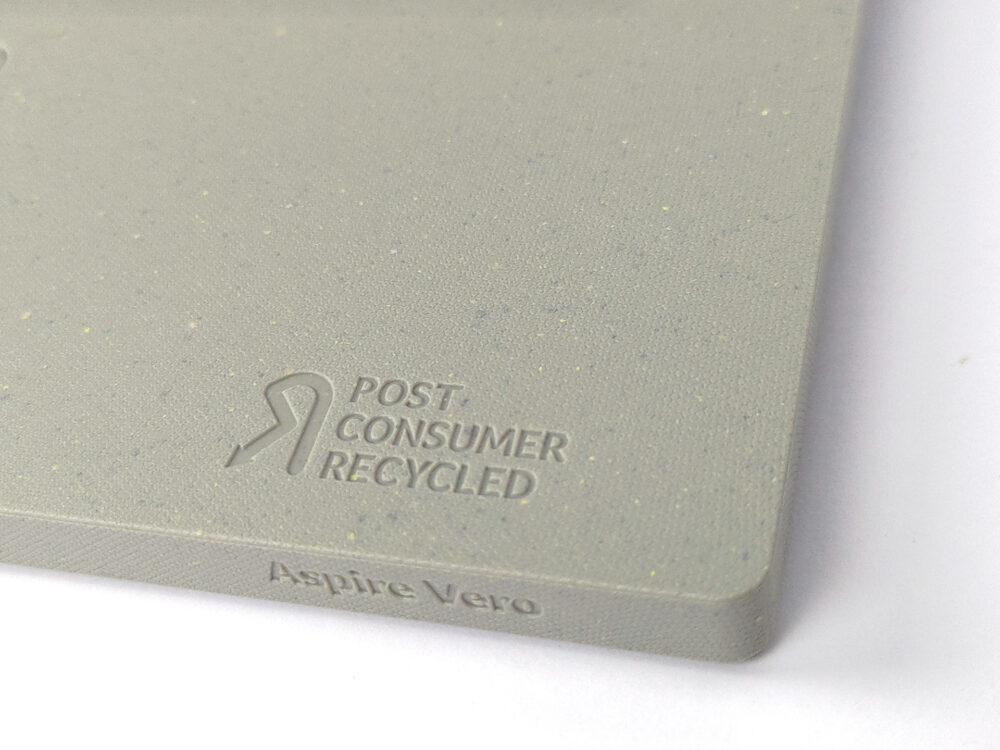
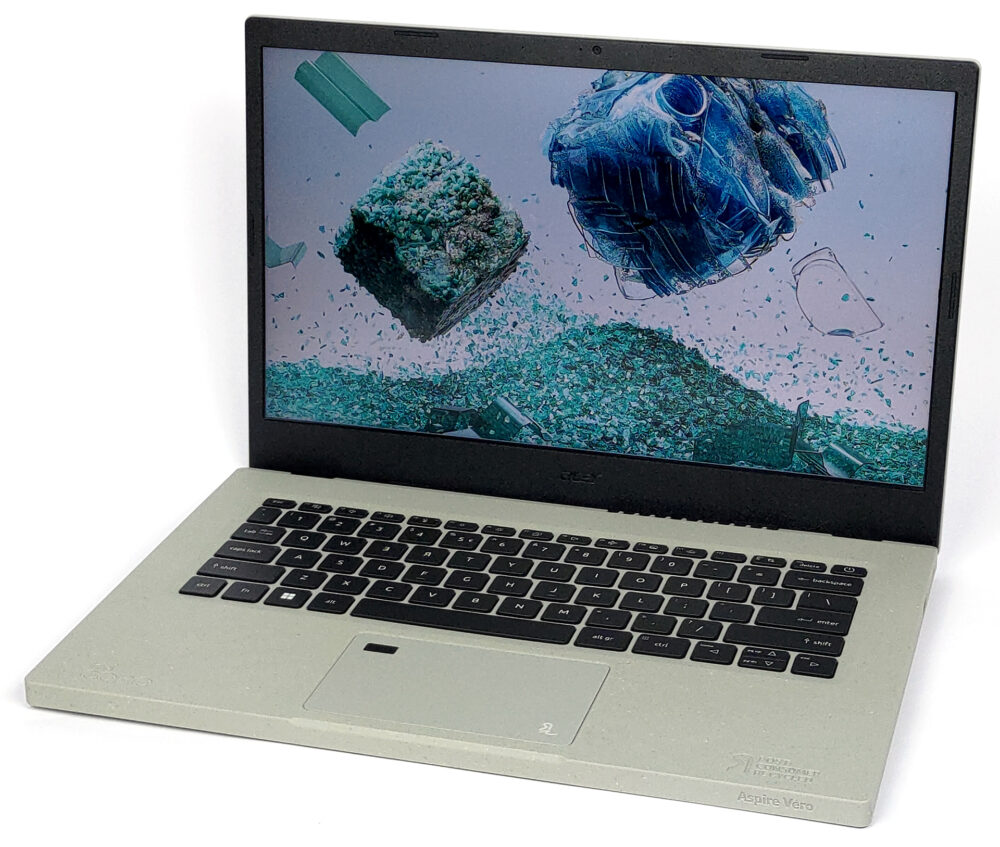
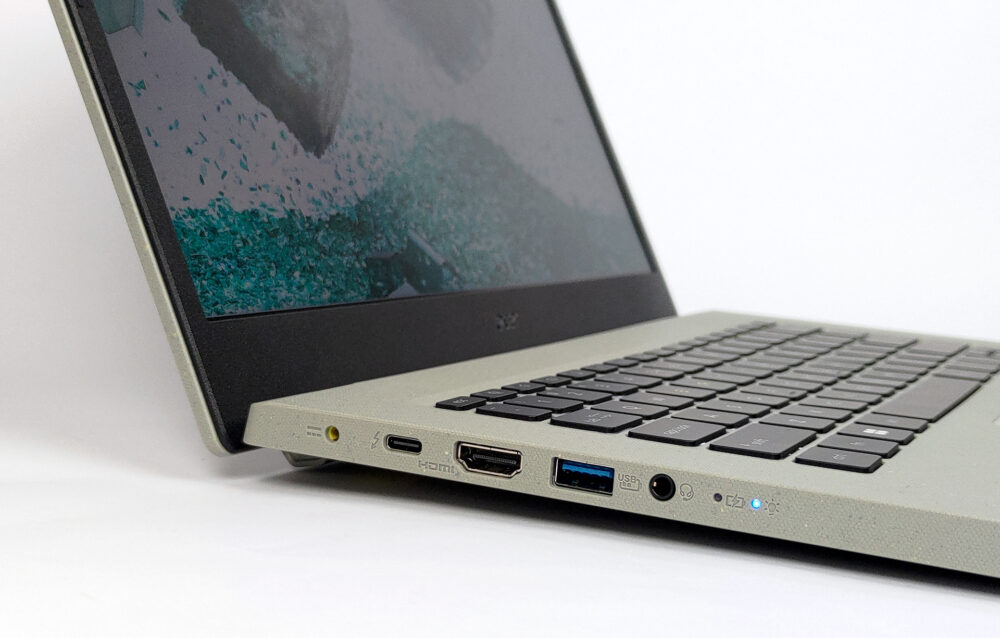
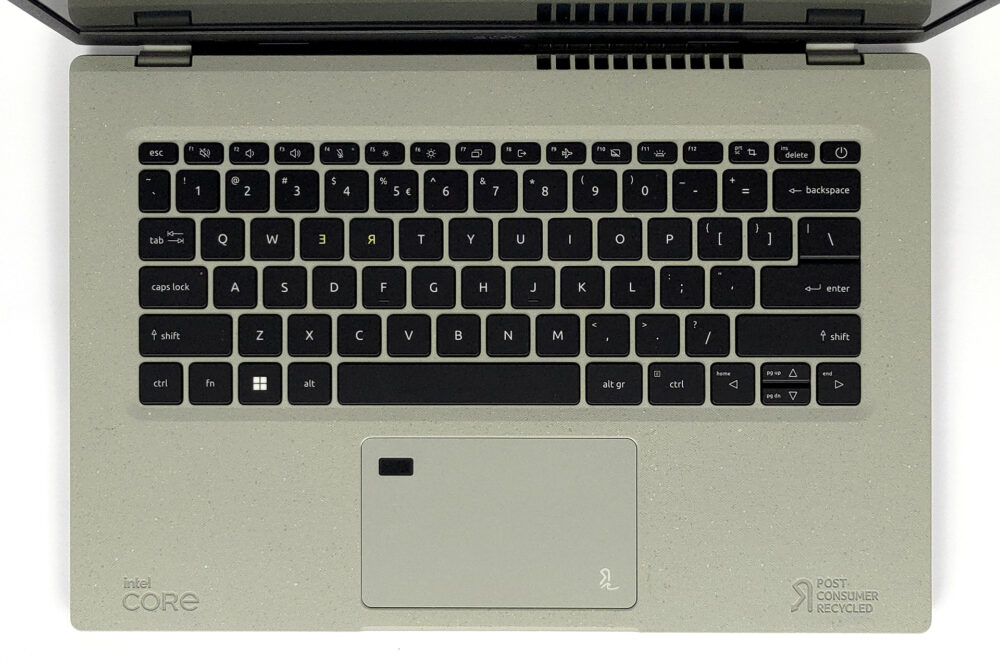
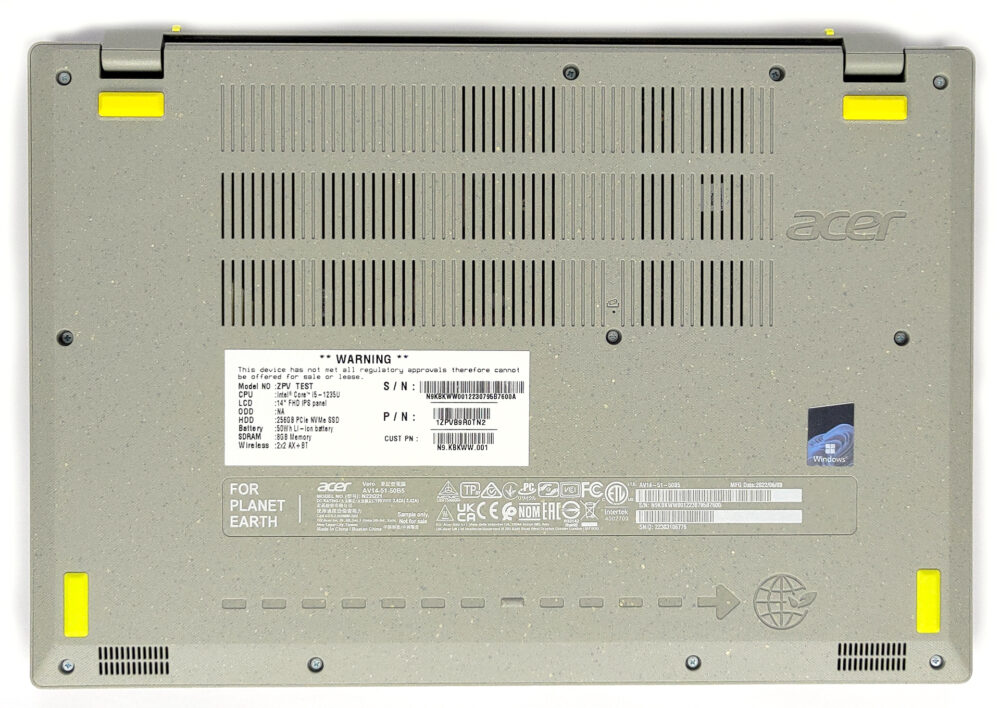



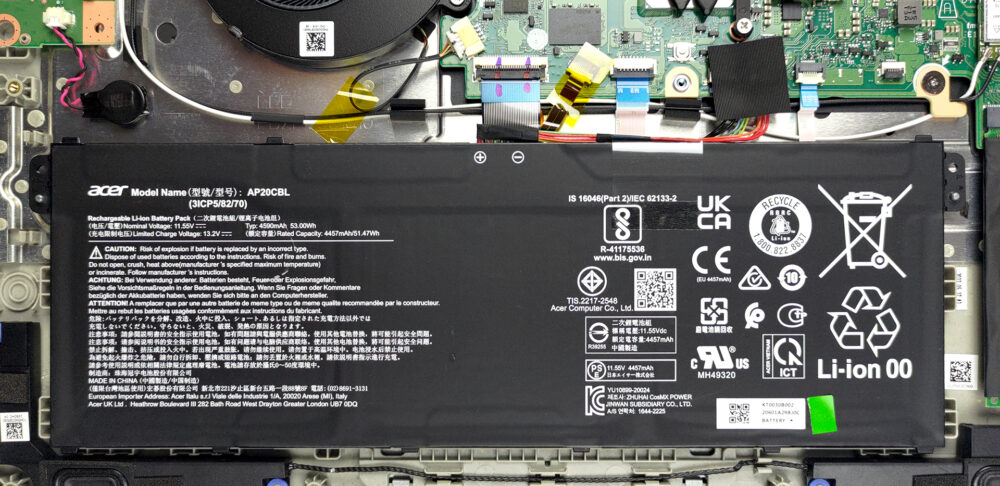
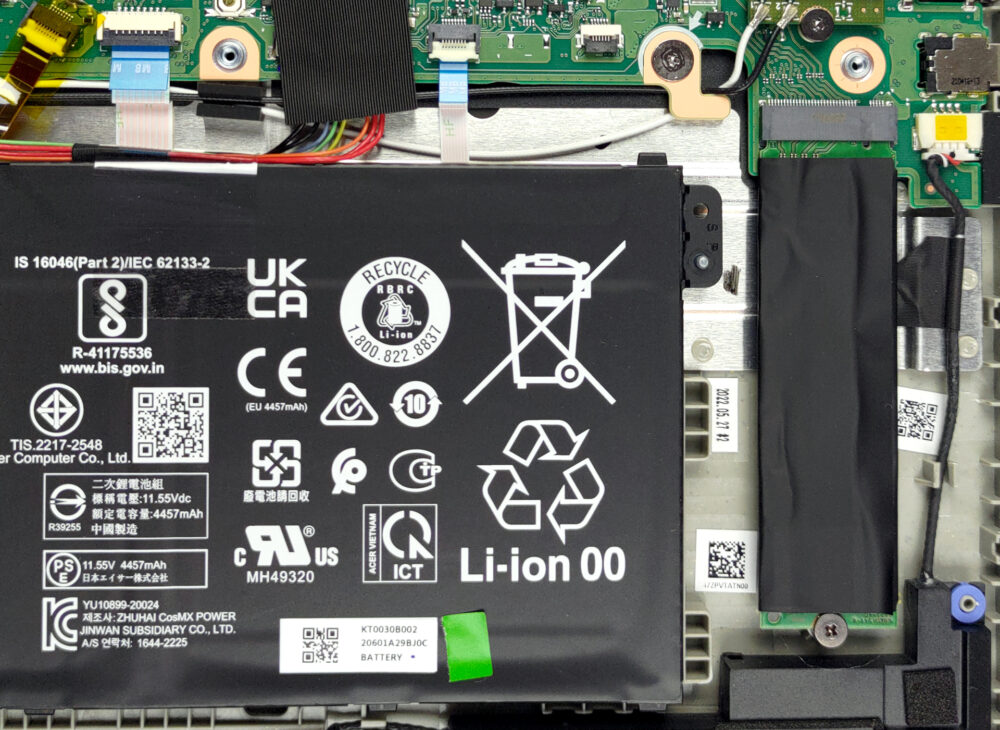
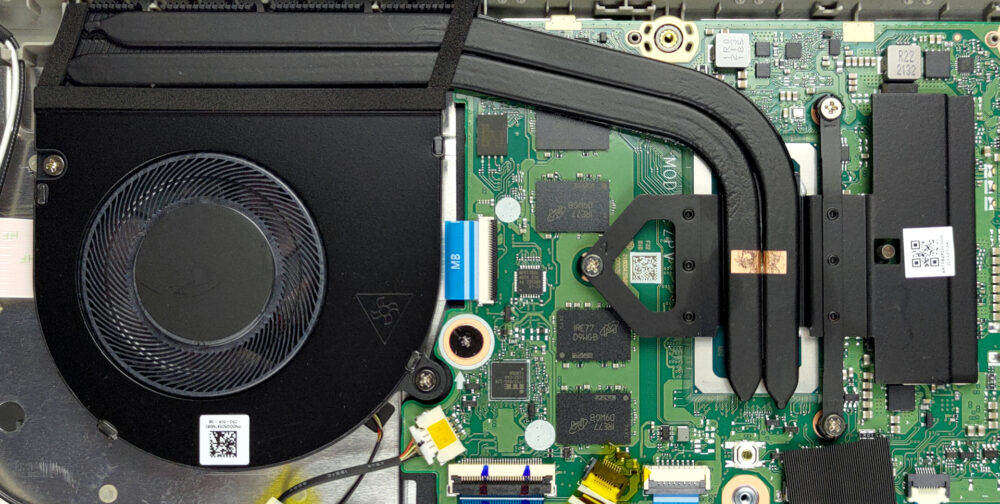
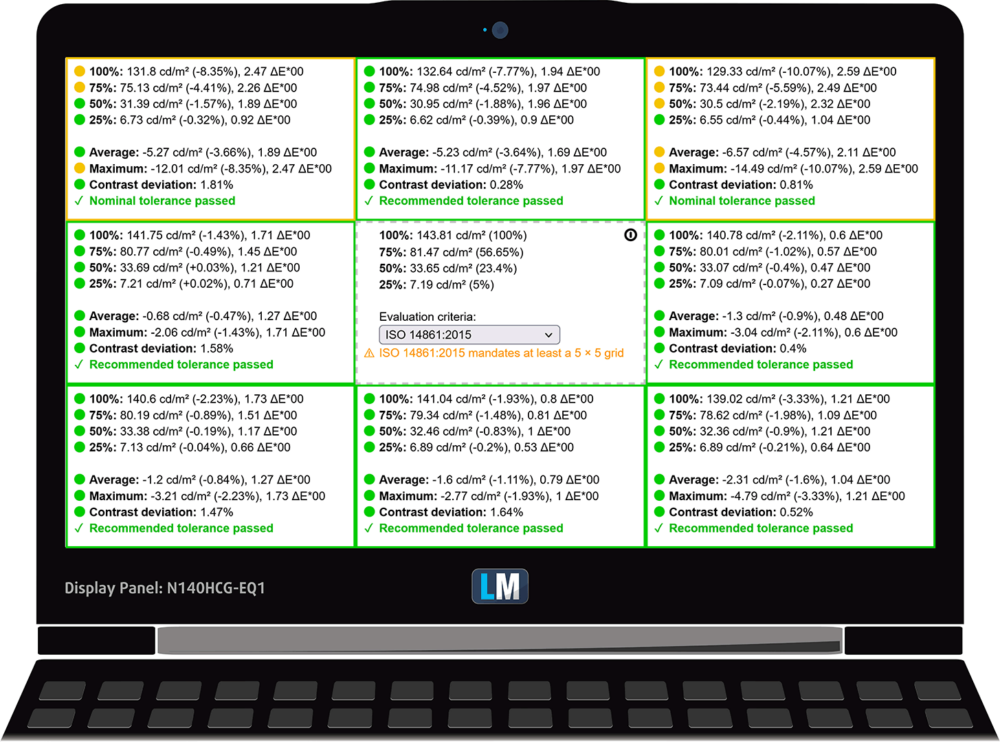



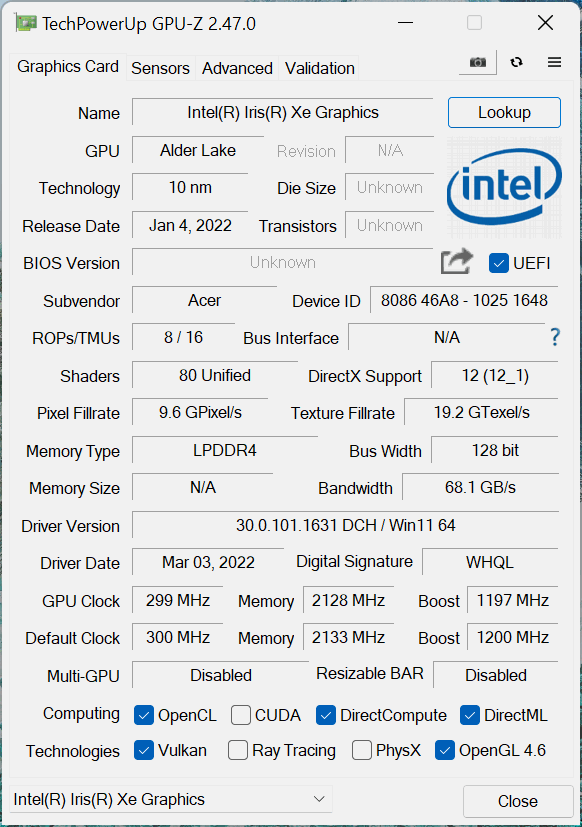







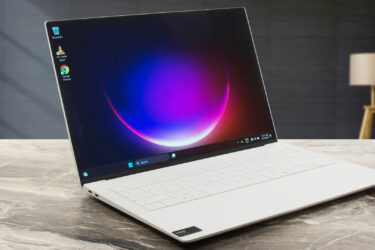
Can you review LG Gram 17 2022?
Can we add NVIDIA GTX 950M GPU to this laptop? Have one from my older Asus i5 5th Gen laptop.